Probably Good News – Coopers Hawk
by: Sherri Leigh Smith
Bird populations are dynamic, and the impacts of human activities have made them ever more so. This medium sized accipiter is a wonderful example of the problems in understanding the dynamics of bird population fluctuations. As a forest species, primarily hunting birds, they were probably fairly common prior to the late 19th century. It is likely the huge assemblages of the now extinct Passenger Pigeon provided ample food in many parts of this hawk’s eastern range. Deforestation and the rapid decline of Passenger Pigeon populations undoubtedly altered Coopers Hawk ecology and reduced their populations.
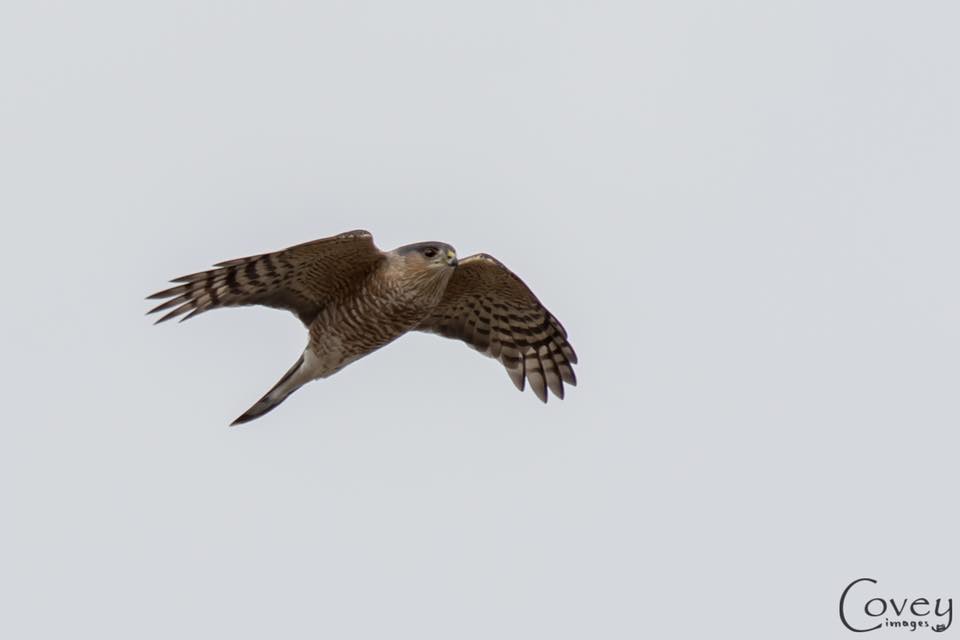
By the latter part of the 19th century, this species adaptability allowed adjustments to the use of alternative prey in a more fragmented forest environment. At this time, all raptors were being shot, as every person’s hand was against them. As songbird eaters, who came to yards with bird feeders, this species and the Sharp-shinned Hawk were particularly reviled. The expert ornithologists of the period 1870-1930 also held this bigoted view of these predators, endorsing destroying them at every turn. The exact population costs of extensive shooting impacted all raptors to an unknown degree. Given the improvement in firearm technology in these years, it’s likely that these losses were significant.
Increasing understanding of the critical role predators play in nature and related conservation/education efforts after the 1930s benefited all hawks and owls. While shooting remained a problem, it was likely reduced. Many states and federal governments in North America passed legislation protecting birds of prey. In addition, shutting down organized gunning at migration concentration sites – Hawk Mountain, Pennsylvania, and Cape May, New Jersey, etc. – reduced the carnage of this species. The Coopers Hawk is a stealth predator, dashing at its prey and then rapidly disappearing. Thus, they were less likely to be successfully killed by irate farmers or homeowners than the conspicuously perched nearby Red-tailed Hawk.
After World War II, Coopers Hawk populations were impacted by DDT, as were other raptors. As a bird eater, often found in wooded suburbs, they suffered severe population declines in areas with heavy use of these poisons. The banning of insidious chemicals, like DDT, in the early 1970s undoubtedly saved this species from widespread extirpation. This is less well documented than for Bald Eagle and Peregrine Falcon, but major declines occurred. Since this specie can raise five or more young if food is adequate, their populations began to rebound by the early 1980s. Coopers Hawks are quite secretive much of the year, thus migration concentration area hawk counts are a best source of data on populations.
Another indicator that populations in many areas of eastern North America are doing well is the regular presence of this species around bird feeders and in human dominated areas. Coopers Hawk appears to adapt well to such areas, being tolerant of human activity except at the nest site itself. A nesting pair can be almost invisible to their human neighbors, even in small fragments of forest. If the reproduction is successful, noisy, food-begging young appear and their presence becomes obvious.
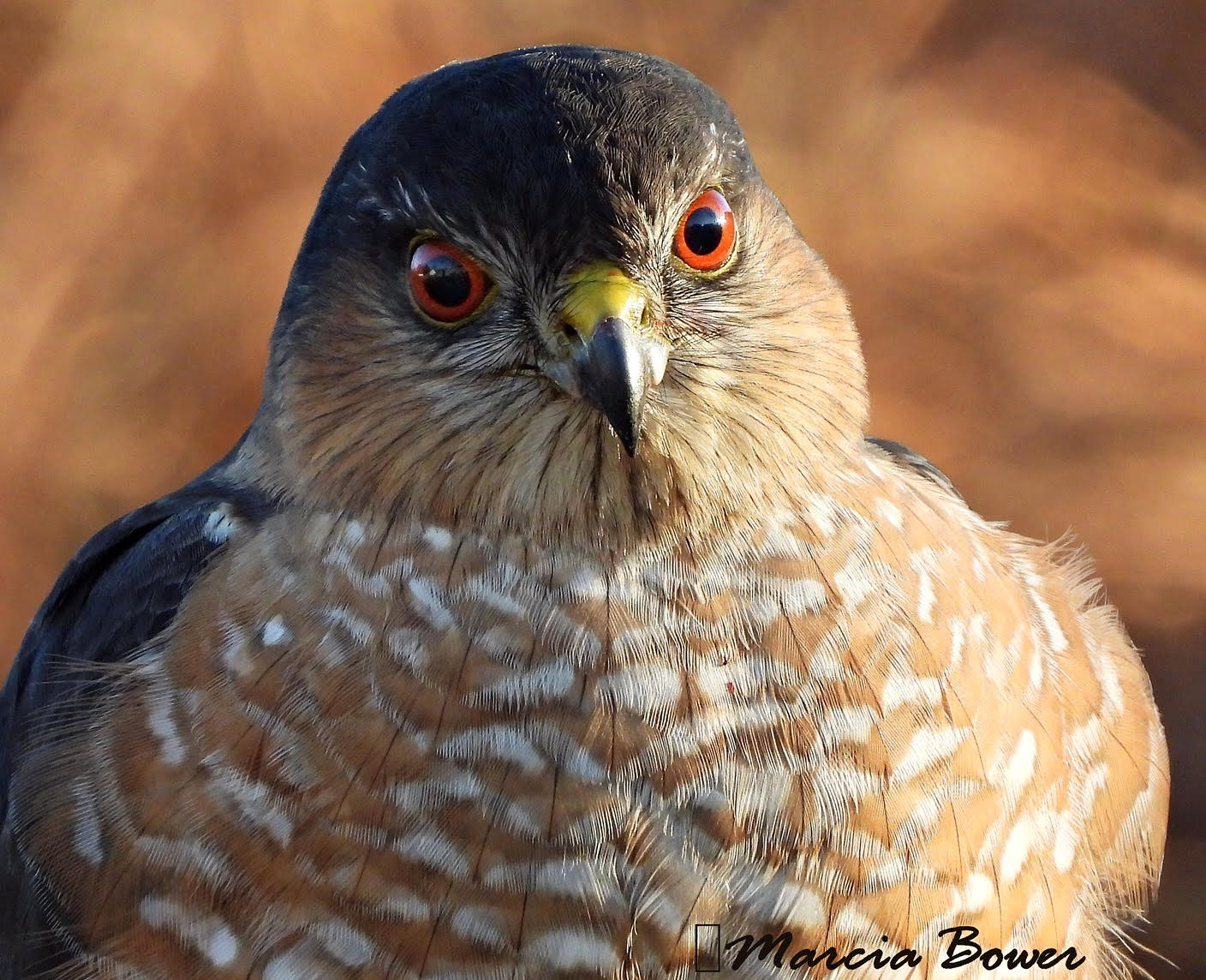
The Coopers Hawk is primarily a North American species, breeding from southern Canada throughout most of the continental United States. Absent only in areas lacking even fragmented forest, this species is probably the most common raptor in urban/suburban regions. They winter throughout much of the breeding range, withdrawing only from the most northerly areas. The winter range also includes Mexico and northern Central America. Northern populations are fairly early spring migrants, with adults that have migrated returning to our region by mid to late March. Some, often immatures, are present locally year round, raiding bird feeders in winter.
This adaptable hawk is now a breeder in neighborhoods ranging from backyards to mature forests. The adult male provides the bulk of food for the female and small young until the young are old enough to be left alone. Since 3 – 5 young may be produced, capturing adequate prey is a full time job for both parents with growing young. When the immatures fledge in June – July, there are many young songbirds fledging also, providing targets for the often incompetent young hawks as they develop hunting skills. From a brood of five, it’s likely that only one, or two, will live to see their second summer.
Catching highly mobile, elusive, avian prey is a tough skill to learn and helps limit the total population of this adaptable species. The breeding season’s success is rapidly reduced over the winter, so that only the most competent survive. Wintering Coopers Hawks, particularly immatures, are drawn to areas with high bird concentrations. In addition to feeders, urban/suburban areas, and farms offer high concentrations of “trash birds” such as European Starling, House Sparrow, and Rock Pigeon. Bird feeders also concentrate birds and provide opportunities for a hungry hawk.
Human feeder owners are often distressed by such visits, and I have received many inquiries of concern. I tell folks that everybody has to eat and the hawks are preforming a critical natural function by weeding out the less fit individuals of prey populations. It is we humans who are creating these concentrations, thus providing an opportunity for the hawk. It is interesting to watch how fast most feeder birds split after a hawk arrives. Usually with reduced opportunity the predator moves on and the feeding songbirds return. Often the hawk may come back and then leave again, mimicking a pattern that is very similar to what occurs in the wild. So, I tell folks to enjoy their two trophic level feeding station, as nature takes its course.
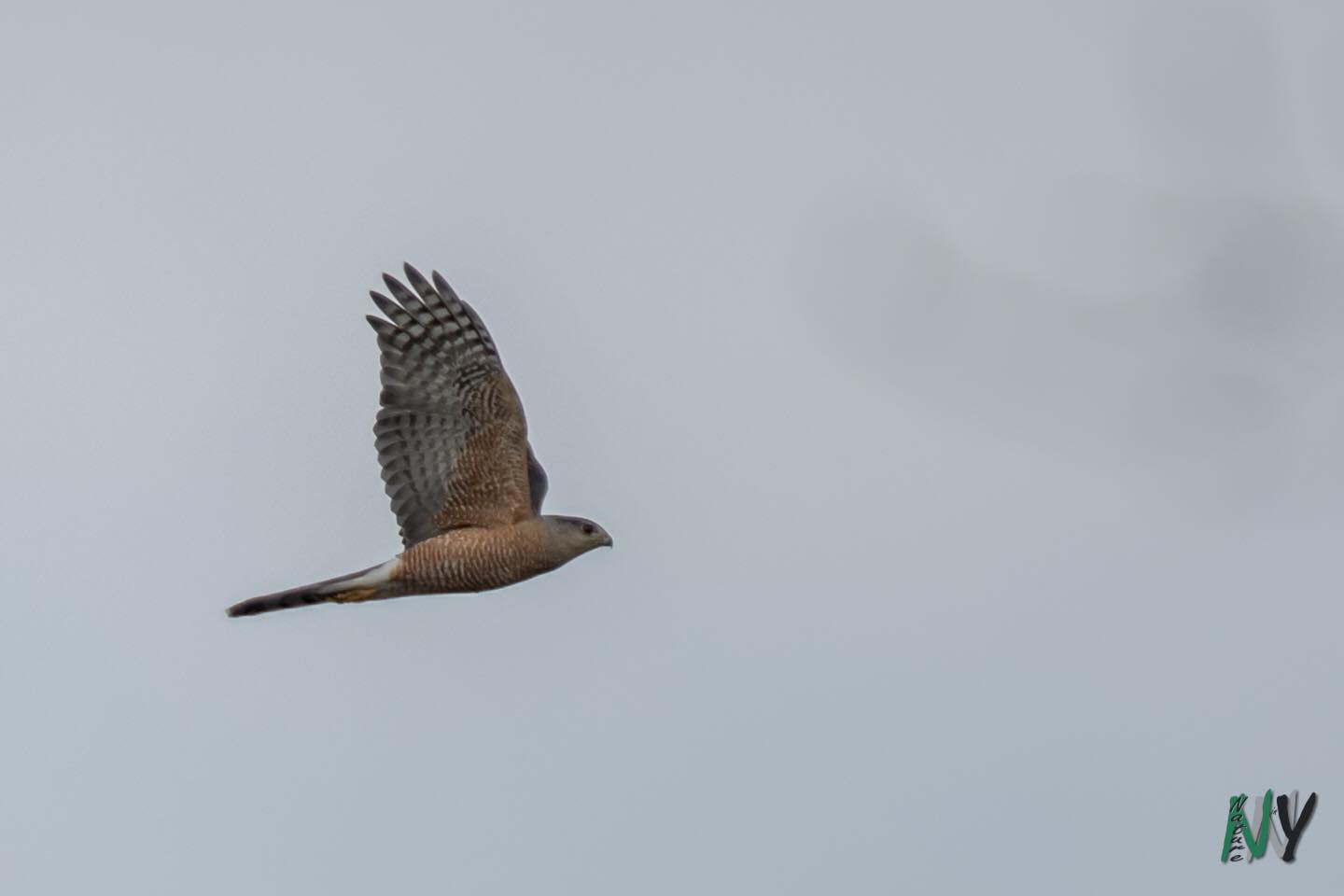
So, the Coopers Hawk appears overall to be a good news species, doing well in most parts of its range. There are problems in riparian areas of the southwestern United States due to habitat loss. There may/may not be a reason for some concern in our region and south-eastern Canada. This population was known as highly migratory through the late 20th century. As I mentioned, migrants of this secretive species are best monitored by hawk watchers at migration concentration sites. Derby Hill Bird Observatory of Onondaga Audubon, located at the southeast corner of Lake Ontario, is one such major site. Since the 1980s, spring seasonal counts of Coopers Hawk have fallen at lease forty or more percent. This is in stark contrast to observations of more southern populations.
Why? Well, this population may be declining, but my instincts suggest another cause. Much of this reduction comes during the adult flight of mid-March to early April. My guess is that many experienced competent hunter adults aren’t migrating or stop short farther north. A warming climate, as noted in the last half century, would enhance the survival of these birds. It may simply be that these descendants of hawks that passed DHBO forty years ago now find Northern New York and southern Canada a suitable place to spend the cold months.
So it’s likely Coopers Hawk should be considered a good news species by us humans and not in need of conservation concerns. However, I suspect European Starlings and Mourning Doves have a different take on the matter.
By Sherri Leigh Smith, goshawk@gisco.net
Sherri Leigh Smith is the Senior Ornithologist in northern NY. She is passionate about birds and their conservation. Sherri Leigh has written numerous articles for TI Life, and you can see several of them here.



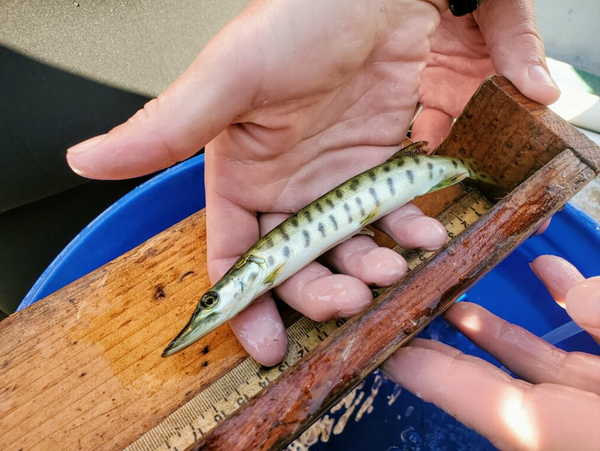
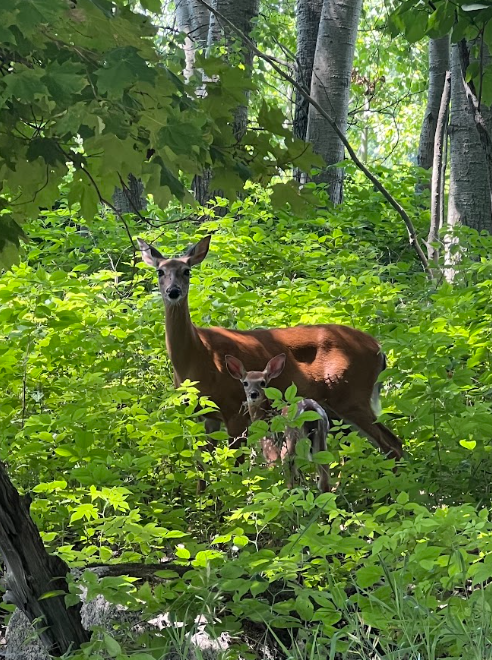
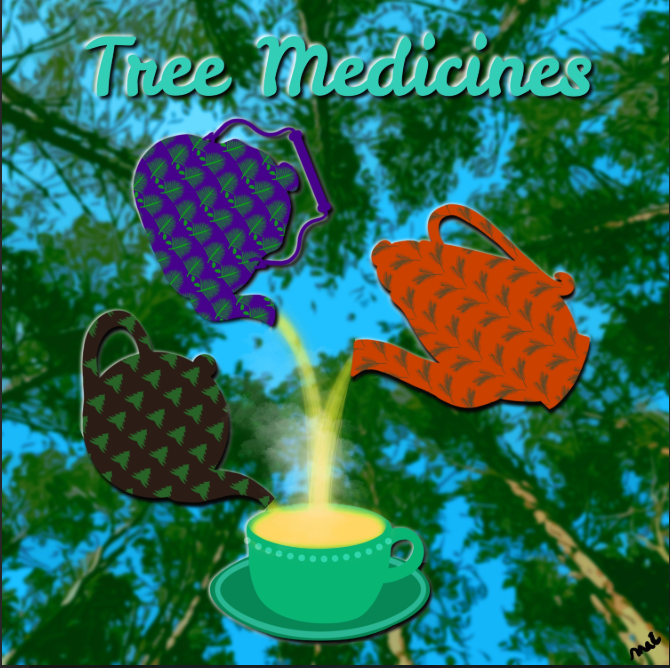
Please click here if you are unable to post your comment.